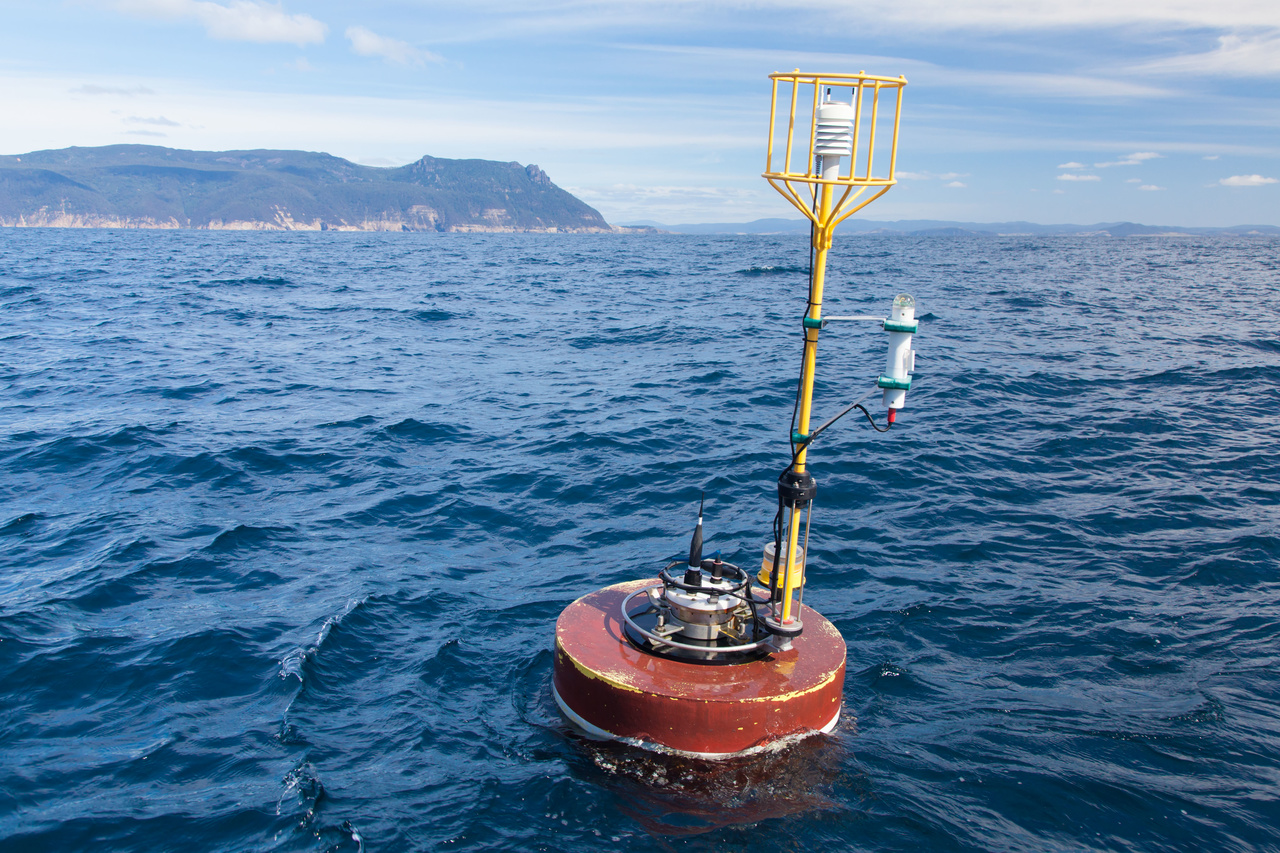A new project is producing a range of long time series products that make mooring data more accessible.
The National Moorings Network is one of the more widespread IMOS facilities, with different oceanographic instruments deployed in many sites all around Australia, with observations going back over 70 years at some stations. However, visualising and analysing the entire time series for a single parameter from one site requires some technical expertise. This requirement is limiting the use and the impact of the observations in the broader user community. Started in April this year, a dedicated project is producing a range of long time series products in a more accessible format.
The new Hourly Time Series combines selected variables measured by all the instruments deployed at one site, binning the values into a fixed one-hour interval. With this process, all the high frequency measurements, like the one-second burst readings of many variables are averaged (or summarised with the median) into a one-hour bin.
The result is a relatively smooth time series, containing only good-quality data (according to the automated quality-control procedures applied by the National Moorings Network). Expert users will find this product useful for quality control purposes, as every bin is complemented with standard statistical indicators of the binning process. Advanced users can use the integrated file for combined analysis of oceanographic variables at each of the IMOS sites, without the need of manipulating, in some cases, hundreds of files individually.
The hourly time series products are available at AODN THREDDS server in a dedicated folder (“hourly_timeseries”) inside each site directory. See for example http://thredds.aodn.org.au/thredds/catalog/IMOS/ANMN/NRS/NRSMAI/hourly_timeseries/catalog.html. Two files are produced for each site: one with only “good” and “probably good” data (according to the QC flags), and a second one including, in addition, values that have not been quality-controlled. The latter version is especially useful for expert users who want to work with a more complete set of values, or need to analyse variables that are not routinely quality controlled (like turbidity). The fully quality-controlled product is also available through the AODN Portal. The variables included are temperature, salinity, dissolved oxygen, chlorophyll estimates, turbidity and downwelling photosynthetic photon flux (PAR), always accompanied with depth and pressure when available.
To encourage the use of the product, two notebooks on how to manipulate and plot the variables are available in the aodn-user-code library (Python version, R version).
The Hourly Time Series product includes deployments since September 2007 to the present, and the product will be updated regularly to include the latest deployments.
Detailed documentation of the product and the Python code used to produce the files is available. This GitHub repository also includes a discussion forum open for comments and improvement suggestions.
For any questions about the product or the project please contact info(at)aodn.org.au
